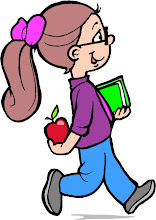In addition to
Child's History of the World, we used:
After reading chapter 51:
- Knights and Castles by Will Osborne -- the is the research guide to the fiction book The Knight at Dawn (which isn't worth reading, in my opinion).
- The Medieval World by Philip Steele -- full of illustrations, text in a large font to read to younger children, lots more information in a small font for children that are older
- A Knight's City by Philip Steele -- a fun book with pop-ups, which give a interactive tour of life in a medieval city. Here is a picture of one pop-up.
After reading chapter 52:
Illuminations by Jonathan Hunt -- we mostly looked at the pictures
How to be a Medieval Knight by Fiona Macdonald
The Middle Ages by Sarah Howarth
The Days of Knights and Castles by Pierre Miquel
Literature:
- Adam of the Road by Elizabeth Janet Gray -- about a boy (Adam) that gets separated from his father in 1294 and Adam's travels and (mis)adventures to find his father
We are making a castle. First we took a square piece of cardboard and painted the moat. Then we made the walls with battlements. K. drew the battlements and I cut them out. We have attached the drawbridge and made a portcullis. We were going to paint the walls on Friday, but the trees on our street were getting trimmed, and that was much more interesting, so maybe we'll do it over the weekend.



We got the walls painted. (Don't glue the walls together before you paint.) We used sponges to give it a rough look. Inside we have a kitchen, the great hall, and the stables. I used half gallon juice cartons and glued (hot glue worked great) white paper on the outside so K. could paint them. I'm still working on the keep. Since K. isn't old enough to use a knife and cut the buildings, I have found it works better to talk about what buildings we want, then I make them at night and read to her while she paints them. Otherwise, she is sitting there watching me work and getting very tired of the project.
I put a counter along one wall of the kitchen.
There are two tables in the great hall. K. wants to paint the wall yellow with pink dots.
I made this door too big, so it is the stable.


















